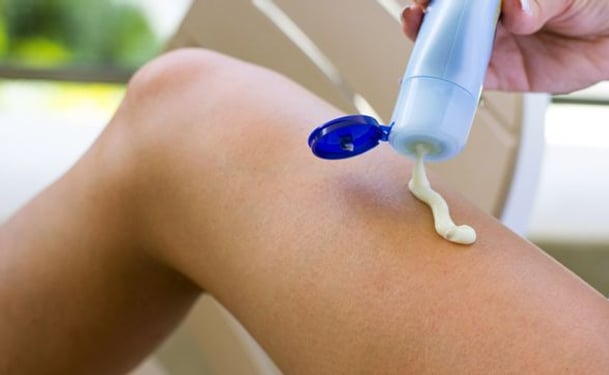Scarring is the natural result of injury to the skin. Whenever an injury affects the deeper layers of the skin, the body produces collagen fibers to heal the damaged area. The new tissue that is formed is known as a scar. This new tissue is different than normal skin; it is less resistant to UV damage, less elastic, and doesn’t contain hair follicles.
Different Types of Scars
Scars can vary quite a bit in their appearance depending on the cause of the injury and the individual’s skin tone. Usually, when a scar is formed, it has a flat and red appearance. The redness fades over time and the scar becomes paler than the surrounding skin. Scars can sometimes become darker than the surrounding skin tone. This is more common in darker skinned individuals. Those with darker skin tones are also at higher risk for developing hypertrophic or keloid scars. These types of raised scars form when the body produces too much collagen at the wound site.
Acne scars will often have a pitted appearance. This type of scar is the result of damage to the deeper tissues. Individuals that suffer from deep, cystic acne are at higher risk for this type of scarring. Sometimes surgical scars can have a dented or pitted appearance. This is usually the result of damage to underlying fat or muscle tissue.
Stretch marks are a type of scar that forms when the skin is stretched rapidly. Pubescent teens and pregnant women are at an increased risk for these types of scars. It is now thought that hormones play a role in this type of scar formation.
Available Treatment Options
Although scars are a part of the natural healing process, most people would rather not have a permanent reminder of their injury. Unfortunately, there is not yet a way to completely eliminate a scar. However, there are treatments that can improve the appearance of a scar.
Topical Treatments
Topical treatments range from the application of vitamin E or coco butter, to the use of more elaborate treatment products such as retinol creams and silicone bandages.
Hydrocortisone Injections
Hydrocortisone injections are used to treat hypertrophic and keloid scars. A series of shots is usually required to soften and flatten the raised scar tissue.
Dermabrasion
Dermabrasion is a treatment that uses an abrasive instrument to sand the upper layers of the skin off. This treatment is usually used for acne scars, but is sometimes used to treat scars resulting from surgery or injury.
Laser Treatments
Laser treatments are now used to treat many types of scars. Some lasers work by removing the upper layers of skin. Others work by stimulating the dermis to produce collagen and elastin, but leave the upper layers of skin intact.
Injectable Fillers
Injectable fillers are sometimes used to raise depressed scars. With most injectable fillers, the results are only temporary and need to be repeated every 3 to 6 months to maintain the desired effect.



